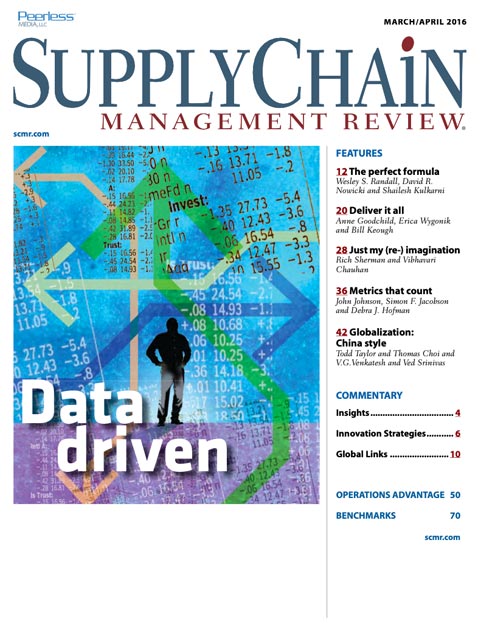Sorry, but your login has failed. Please recheck your login information and resubmit. If your subscription has expired, renew here.
March-April 2016
When I visit my millennial-aged daughter in Chicago, I’m amazed at the number of packages dropped off by UPS, FedEx and the USPS at her three-unit building on a daily basis. It’s as if she and her neighbors are single-handedly keeping Amazon in business. All those drop-offs got me to wondering: Does any of this make sense if you think about a carbon footprint? Rather than deliver millions of packages to one address at a time every day, wouldn’t it be more sustainable if we all just drove to the mall to do our shopping? After all, doesn’t research indicate that a signi cant percentage of consumers, especially millennial consumers like my… Browse this issue archive.Need Help? Contact customer service 847-559-7581 More options
What do Class 8 trucks and cell phones have in common? Their end-of-life (EOL) strategies are shaped in large part by each product’s characteristics as well as current market conditions.
These factors have long been part of the reverse channel, but how relevant are they in the booming market for wearable technology devices, or wearables? Market analyst IDC estimates that 91 million wearable devices were shipped in the third quarter of 2015—an increase of almost 200% over the same period a year ago. The industry needs effective EOL strategies as it grows rapidly, and governments tighten regulations covering the handling of used electronic products.
Research underway at the MIT Center for Transportation & Logistics suggests that companies producing wearables should learn from established markets if they want to develop innovative ways to recover the value of used parts and products.
 |
This complete article is available to subscribers
only. Click on Log In Now at the top of this article for full access. Or, Start your PLUS+ subscription for instant access. |
SC
MR
Sorry, but your login has failed. Please recheck your login information and resubmit. If your subscription has expired, renew here.
March-April 2016
When I visit my millennial-aged daughter in Chicago, I’m amazed at the number of packages dropped off by UPS, FedEx and the USPS at her three-unit building on a daily basis. It’s as if she and her neighbors are… Browse this issue archive. Access your online digital edition. Download a PDF file of the March-April 2016 issue. |
Download Article PDF |
What do Class 8 trucks and cell phones have in common? Their end-of-life (EOL) strategies are shaped in large part by each product's characteristics as well as current market conditions.
These factors have long been part of the reverse channel, but how relevant are they in the booming market for wearable technology devices, or wearables? Market analyst IDC estimates that 91 million wearable devices were shipped in the third quarter of 2015—an increase of almost 200% over the same period a year ago. The industry needs effective EOL strategies as it grows rapidly, and governments tighten regulations covering the handling of used electronic products.
Research underway at the MIT Center for Transportation & Logistics suggests that companies producing wearables should learn from established markets if they want to develop innovative ways to recover the value of used parts and products.
 |
SUBSCRIBERS: Click here to download PDF of the full article. |
SC
MR

Latest Supply Chain News
- How CPG brands can deliver on supplier diversity promises
- How S&OP provides the answer to in-demand products
- AI, virtual reality is bringing experiential learning into the modern age
- Humanoid robots’ place in an intralogistics smart robot strategy
- Tips for CIOs to overcome technology talent acquisition troubles
- More News
Latest Podcast

 Explore
Explore
Topics
Latest Supply Chain News
- How CPG brands can deliver on supplier diversity promises
- How S&OP provides the answer to in-demand products
- AI, virtual reality is bringing experiential learning into the modern age
- Humanoid robots’ place in an intralogistics smart robot strategy
- Tips for CIOs to overcome technology talent acquisition troubles
- There is still work to do to achieve supply chain stability
- More latest news
Latest Resources

Subscribe

Supply Chain Management Review delivers the best industry content.

Editors’ Picks





